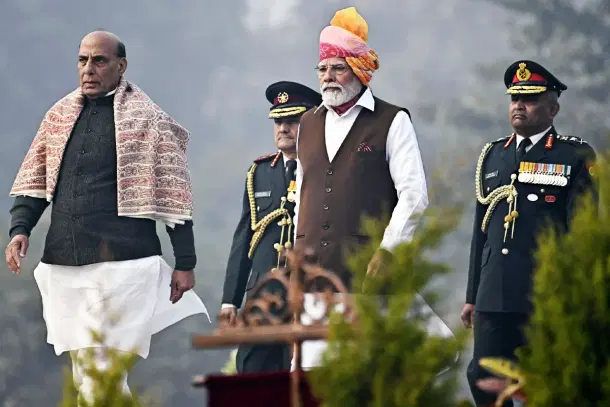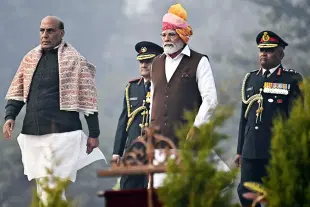Defence
Israel’s Novel 'Pager' Attack Should Serve As A Wake Up Call For Indian Military
Ujjwal Shrotryia
Sep 18, 2024, 05:56 PM | Updated Sep 20, 2024, 05:40 PM IST
Save & read from anywhere!
Bookmark stories for easy access on any device or the Swarajya app.


Israel yesterday (17 September) conducted one of the most innovative and novel attacks of modern times on Hezbollah, an attack that resembles something straight out of a comic or superhero novel.
However, this attack also highlights the vulnerability of supply chains — of parts, components, and subcomponents, systems and subsystems — both of dual-use and military equipment, and how they can change the face of war.
Yesterday, at 3.30 pm, thousands of small explosions shook Lebanon. Apparently, a new batch of pagers ordered by Hezbollah, an Islamic terrorist organisation, from the Taiwanese company Gold Apollo blew up, killing 11 Hezbollah operatives and injuring 2,700 others.
This was one of the most innovative attacks ever seen.
The first question that arises is, why use pagers — a vintage technology — instead of using modern communication devices like mobile phones, telephones, or computers.
This is because of Israel's excellent technical surveillance capabilities.
Most of the communications done using modern cellular technology are intercepted by the Israelis. That is why Hezbollah uses vintage pagers that minimise the chances of any slip-up.
These pagers simultaneously exploded at 3.30 pm when they reportedly received a message that looked like it was coming from Hezbollah leadership.
Reports suggest that these pagers — primarily Gold Apollo's AR924 models — were tampered with, and a small amount of explosive (two to three grams) was planted next to the battery compartment prior to their shipment to Lebanon, which was then distributed to Hezbollah operatives. A switch was also embedded that could be remotely triggered to detonate the explosives.
This disguised Hezbollah leadership message was used to trigger these explosives.
These pagers were most likely tampered with while in production.
This should be a lesson that India's national security leadership should learn, ie, the security of supply chains. And it further highlights the need for atmanirbharta in defence.
For instance, take the case of the Tejas Mk-1A jet fighter.
It has repeatedly missed delivery timelines because its American-made engine has still not been delivered by the engine's manufacturer, General Electric (GE). This has caused the jet delivery to slip from March 2024 to November 2024.
Not just that, a report by The Print released just some hours ago (18 September) mentions that another small component, an engine charge amplifier, has also been delayed due to Denmark putting it on an export blacklist.
Although the component is small, it is an important element which measures the temperature of the jet engine, and if the component is not delivered on time, even more delays can occur.
To address this, Hindustan Aeronautics Limited (HAL) has now contracted a Bengaluru firm to indigenise this component, which will be delivered in a short time.
A similar case is that of Indian drone manufacturers using Chinese components in their unmanned aerial vehicles.
Just a month ago (in August), the government banned the use of drones in the armed forces that use any Chinese-made components. This ban was primarily for components that were used in drones' communications, cameras, and software.
But now, the incident in Lebanon suggests that even innocuous-looking components can also compromise such equipment.
Therefore, atmanirbharta in defence has become the need of the hour — not just in lip service but also on the ground as well. Sure, foreign components can be used in the prototype development phase to speed up the process. But when it comes to actual production, made-in-India components should always be the way to go.
Staff Writer at Swarajya. Writes on Indian Military and Defence.





